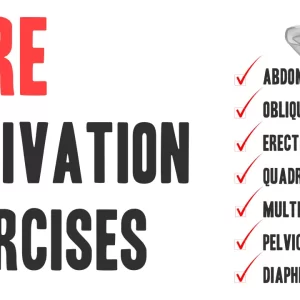Contents
Embarking on a fitness journey is a commendable pursuit, but without proper precautions, the road to a healthier lifestyle can be riddled with potential pitfalls. In the quest for peak physical wellbeing, preventing injuries while working out should be a top priority.
Whether a seasoned gym-goer or a fitness novice, it’s crucial to prioritize safety to ensure consistent progress and long-term wellbeing. A chiropractor can also provide valuable insights into crafting a workout routine that not only promotes fitness but also safeguards against potential injuries. This comprehensive guide will help you navigate your fitness journey with confidence and minimize the risk of injuries:
Proper Warm-up and Cool-down Techniques
Adequate warm-up and cool-down routines are pivotal in injury prevention. Before an intense workout, spend at least 10 minutes engaging in dynamic stretches and low-impact cardiovascular exercises. This increases blood flow to the muscles, enhances joint flexibility, and prepares your body for the upcoming physical demands.



Dynamic stretches such as arm circles, hip rotations and leg swings are excellent choices for warming up. Gradually elevate your heart rate with activities like brisk walking, light jogging, or jumping jacks. Additionally, consider incorporating specific warm-up sets with lighter weights before progressing to your main workout.
Equally important is the cool-down phase, where you gradually lower your heart rate and stretch the muscles you’ve targeted during the workout. This can include static stretches and gentle movements to promote flexibility and aid muscle recovery. Implementing these cool-down routines into your training not only reduces the risk of injury but also contributes to improved overall performance.
Appropriate Form and Technique
Poor form and technique is one of the most common causes of injuries during exercise. Whether lifting weights, performing bodyweight exercises, or engaging in cardiovascular activities, maintaining proper form is paramount. Incorrect form diminishes the effectiveness of the exercise and puts unnecessary stress on joints and muscles, leading to potential injuries.

Take the time to educate yourself on the correct form for each exercise in your routine. If you’re unsure, seek guidance from fitness professionals or consider hiring a personal trainer to ensure you grasp the fundamentals. Paying attention to body alignment, joint angles, and range of motion can significantly reduce the risk of overuse injuries and strain. Gradual progression allows your muscles and joints to adapt, minimizing the risk of overexertion and injury.
Balanced Training and Rest Days
Achieving a well-rounded fitness routine involves incorporating a variety of exercises to target different muscle groups and aspects of fitness. While consistency is key, so is balance. Overemphasis on a particular type of exercise or neglecting certain muscle groups can lead to muscular imbalances and increase the risk of injury.
Include a mix of cardiovascular exercises, strength training, and flexibility work in your weekly routine. This not only provides a holistic approach to fitness but also helps prevent overuse injuries associated with repetitive movements. Incorporate rest days into your schedule to allow your body to recover and repair. Rest is an integral part of the fitness equation, enabling muscles to heal and adapt to the stresses imposed during workouts.
Listen to Your Body and Adjust Accordingly
Perhaps the most crucial aspect of injury prevention is staying attuned to your body’s signals. Pain, especially sharp or persistent discomfort, should never be ignored. It’s essential to distinguish between the normal discomfort associated with a challenging workout and the warning signs of potential injury.
If you experience pain, modify or discontinue the exercise and consult with a healthcare professional if necessary. Pushing through pain can exacerbate injuries and lead to longer recovery times. Additionally, be mindful of signs of overtraining, like fatigue and decreased performance. Adjust your workout intensity and volume as needed and prioritize adequate sleep and nutrition to support your body’s recovery processes.
Endnote
Prioritizing injury prevention while working out is paramount for a sustainable and successful fitness journey. Adhering to the abovementioned principles can greatly minimize the likelihood of injuries. Integrating the expertise of a chiropractor adds insight and care, enhancing musculoskeletal health. With these strategies in place, you can pursue fitness goals confidently, ensuring longevity and wellbeing.
Image Source:
- https://unsplash.com/photos/people-exercising-Vz0RbclzG_w



